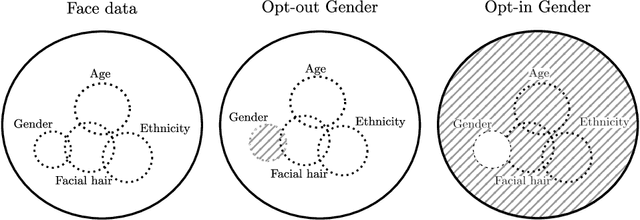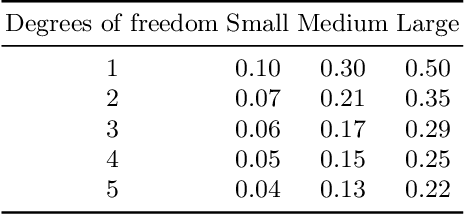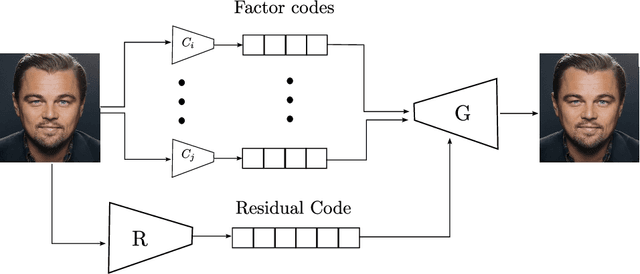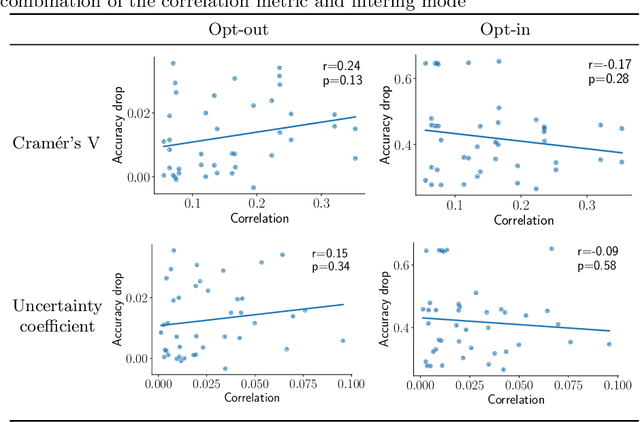Pieter Simoens
In-Field Mapping of Grape Yield and Quality with Illumination-Invariant Deep Learning
Oct 06, 2025Abstract:This paper presents an end-to-end, IoT-enabled robotic system for the non-destructive, real-time, and spatially-resolved mapping of grape yield and quality (Brix, Acidity) in vineyards. The system features a comprehensive analytical pipeline that integrates two key modules: a high-performance model for grape bunch detection and weight estimation, and a novel deep learning framework for quality assessment from hyperspectral (HSI) data. A critical barrier to in-field HSI is the ``domain shift" caused by variable illumination. To overcome this, our quality assessment is powered by the Light-Invariant Spectral Autoencoder (LISA), a domain-adversarial framework that learns illumination-invariant features from uncalibrated data. We validated the system's robustness on a purpose-built HSI dataset spanning three distinct illumination domains: controlled artificial lighting (lab), and variable natural sunlight captured in the morning and afternoon. Results show the complete pipeline achieves a recall (0.82) for bunch detection and a $R^2$ (0.76) for weight prediction, while the LISA module improves quality prediction generalization by over 20% compared to the baselines. By combining these robust modules, the system successfully generates high-resolution, georeferenced data of both grape yield and quality, providing actionable, data-driven insights for precision viticulture.
* Accepted manuscript for the IEEE Internet of Things Journal. The final version will be available on IEEE Xplore. \c{opyright} 2025 IEEE
Enabling Privacy-Aware AI-Based Ergonomic Analysis
May 12, 2025Abstract:Musculoskeletal disorders (MSDs) are a leading cause of injury and productivity loss in the manufacturing industry, incurring substantial economic costs. Ergonomic assessments can mitigate these risks by identifying workplace adjustments that improve posture and reduce strain. Camera-based systems offer a non-intrusive, cost-effective method for continuous ergonomic tracking, but they also raise significant privacy concerns. To address this, we propose a privacy-aware ergonomic assessment framework utilizing machine learning techniques. Our approach employs adversarial training to develop a lightweight neural network that obfuscates video data, preserving only the essential information needed for human pose estimation. This obfuscation ensures compatibility with standard pose estimation algorithms, maintaining high accuracy while protecting privacy. The obfuscated video data is transmitted to a central server, where state-of-the-art keypoint detection algorithms extract body landmarks. Using multi-view integration, 3D keypoints are reconstructed and evaluated with the Rapid Entire Body Assessment (REBA) method. Our system provides a secure, effective solution for ergonomic monitoring in industrial environments, addressing both privacy and workplace safety concerns.
Adaptive Clustering for Efficient Phenotype Segmentation of UAV Hyperspectral Data
Jan 17, 2025



Abstract:Unmanned Aerial Vehicles (UAVs) combined with Hyperspectral imaging (HSI) offer potential for environmental and agricultural applications by capturing detailed spectral information that enables the prediction of invisible features like biochemical leaf properties. However, the data-intensive nature of HSI poses challenges for remote devices, which have limited computational resources and storage. This paper introduces an Online Hyperspectral Simple Linear Iterative Clustering algorithm (OHSLIC) framework for real-time tree phenotype segmentation. OHSLIC reduces inherent noise and computational demands through adaptive incremental clustering and a lightweight neural network, which phenotypes trees using leaf contents such as chlorophyll, carotenoids, and anthocyanins. A hyperspectral dataset is created using a custom simulator that incorporates realistic leaf parameters, and light interactions. Results demonstrate that OHSLIC achieves superior regression accuracy and segmentation performance compared to pixel- or window-based methods while significantly reducing inference time. The method`s adaptive clustering enables dynamic trade-offs between computational efficiency and accuracy, paving the way for scalable edge-device deployment in HSI applications.
Predicting change in time production -- A machine learning approach to time perception
Dec 17, 2024Abstract:Time perception research has advanced significantly over the years. However, some areas remain largely unexplored. This study addresses two such under-explored areas in timing research: (1) A quantitative analysis of time perception at an individual level, and (2) Time perception in an ecological setting. In this context, we trained a machine learning model to predict the direction of change in an individual's time production. The model's training data was collected using an ecologically valid setup. We moved closer to an ecological setting by conducting an online experiment with 995 participants performing a time production task that used naturalistic videos (no audio) as stimuli. The model achieved an accuracy of 61%. This was 10 percentage points higher than the baseline models derived from cognitive theories of timing. The model performed equally well on new data from a second experiment, providing evidence of its generalization capabilities. The model's output analysis revealed that it also contained information about the magnitude of change in time production. The predictions were further analysed at both population and individual level. It was found that a participant's previous timing performance played a significant role in determining the direction of change in time production. By integrating attentional-gate theories from timing research with feature importance techniques from machine learning, we explained model predictions using cognitive theories of timing. The model and findings from this study have potential applications in systems involving human-computer interactions where understanding and predicting changes in user's time perception can enable better user experience and task performance.
Reward Machine Inference for Robotic Manipulation
Dec 13, 2024Abstract:Learning from Demonstrations (LfD) and Reinforcement Learning (RL) have enabled robot agents to accomplish complex tasks. Reward Machines (RMs) enhance RL's capability to train policies over extended time horizons by structuring high-level task information. In this work, we introduce a novel LfD approach for learning RMs directly from visual demonstrations of robotic manipulation tasks. Unlike previous methods, our approach requires no predefined propositions or prior knowledge of the underlying sparse reward signals. Instead, it jointly learns the RM structure and identifies key high-level events that drive transitions between RM states. We validate our method on vision-based manipulation tasks, showing that the inferred RM accurately captures task structure and enables an RL agent to effectively learn an optimal policy.
Mitigating Bias Using Model-Agnostic Data Attribution
May 08, 2024Abstract:Mitigating bias in machine learning models is a critical endeavor for ensuring fairness and equity. In this paper, we propose a novel approach to address bias by leveraging pixel image attributions to identify and regularize regions of images containing significant information about bias attributes. Our method utilizes a model-agnostic approach to extract pixel attributions by employing a convolutional neural network (CNN) classifier trained on small image patches. By training the classifier to predict a property of the entire image using only a single patch, we achieve region-based attributions that provide insights into the distribution of important information across the image. We propose utilizing these attributions to introduce targeted noise into datasets with confounding attributes that bias the data, thereby constraining neural networks from learning these biases and emphasizing the primary attributes. Our approach demonstrates its efficacy in enabling the training of unbiased classifiers on heavily biased datasets.
Learning Safety Constraints From Demonstration Using One-Class Decision Trees
Dec 14, 2023Abstract:The alignment of autonomous agents with human values is a pivotal challenge when deploying these agents within physical environments, where safety is an important concern. However, defining the agent's objective as a reward and/or cost function is inherently complex and prone to human errors. In response to this challenge, we present a novel approach that leverages one-class decision trees to facilitate learning from expert demonstrations. These decision trees provide a foundation for representing a set of constraints pertinent to the given environment as a logical formula in disjunctive normal form. The learned constraints are subsequently employed within an oracle constrained reinforcement learning framework, enabling the acquisition of a safe policy. In contrast to other methods, our approach offers an interpretable representation of the constraints, a vital feature in safety-critical environments. To validate the effectiveness of our proposed method, we conduct experiments in synthetic benchmark domains and a realistic driving environment.
Maximum Causal Entropy Inverse Constrained Reinforcement Learning
May 04, 2023Abstract:When deploying artificial agents in real-world environments where they interact with humans, it is crucial that their behavior is aligned with the values, social norms or other requirements of that environment. However, many environments have implicit constraints that are difficult to specify and transfer to a learning agent. To address this challenge, we propose a novel method that utilizes the principle of maximum causal entropy to learn constraints and an optimal policy that adheres to these constraints, using demonstrations of agents that abide by the constraints. We prove convergence in a tabular setting and provide an approximation which scales to complex environments. We evaluate the effectiveness of the learned policy by assessing the reward received and the number of constraint violations, and we evaluate the learned cost function based on its transferability to other agents. Our method has been shown to outperform state-of-the-art approaches across a variety of tasks and environments, and it is able to handle problems with stochastic dynamics and a continuous state-action space.
Selective manipulation of disentangled representations for privacy-aware facial image processing
Aug 26, 2022



Abstract:Camera sensors are increasingly being combined with machine learning to perform various tasks such as intelligent surveillance. Due to its computational complexity, most of these machine learning algorithms are offloaded to the cloud for processing. However, users are increasingly concerned about privacy issues such as function creep and malicious usage by third-party cloud providers. To alleviate this, we propose an edge-based filtering stage that removes privacy-sensitive attributes before the sensor data are transmitted to the cloud. We use state-of-the-art image manipulation techniques that leverage disentangled representations to achieve privacy filtering. We define opt-in and opt-out filter operations and evaluate their effectiveness for filtering private attributes from face images. Additionally, we examine the effect of naturally occurring correlations and residual information on filtering. We find the results promising and believe this elicits further research on how image manipulation can be used for privacy preservation.
TinyMLOps: Operational Challenges for Widespread Edge AI Adoption
Mar 27, 2022
Abstract:Deploying machine learning applications on edge devices can bring clear benefits such as improved reliability, latency and privacy but it also introduces its own set of challenges. Most works focus on the limited computational resources of edge platforms but this is not the only bottleneck standing in the way of widespread adoption. In this paper we list several other challenges that a TinyML practitioner might need to consider when operationalizing an application on edge devices. We focus on tasks such as monitoring and managing the application, common functionality for a MLOps platform, and show how they are complicated by the distributed nature of edge deployment. We also discuss issues that are unique to edge applications such as protecting a model's intellectual property and verifying its integrity.
 Add to Chrome
Add to Chrome Add to Firefox
Add to Firefox Add to Edge
Add to Edge